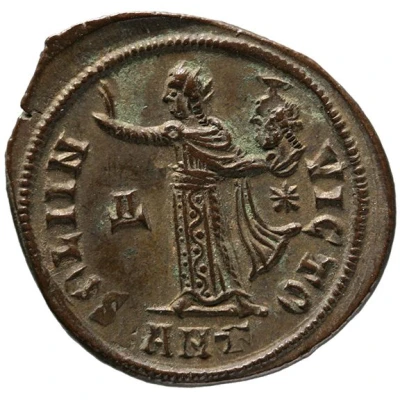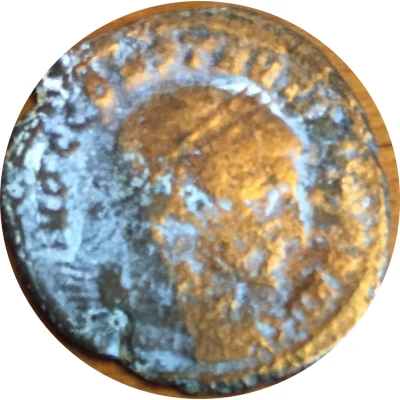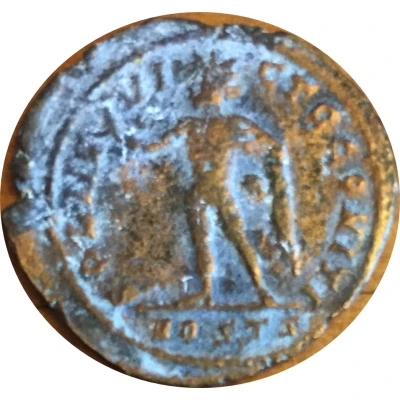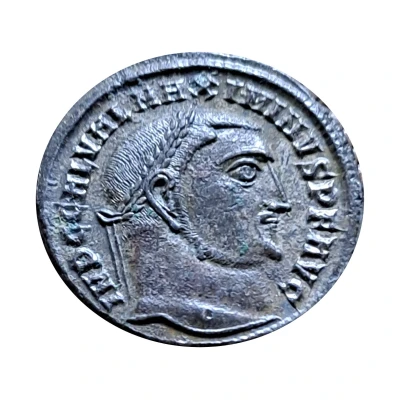
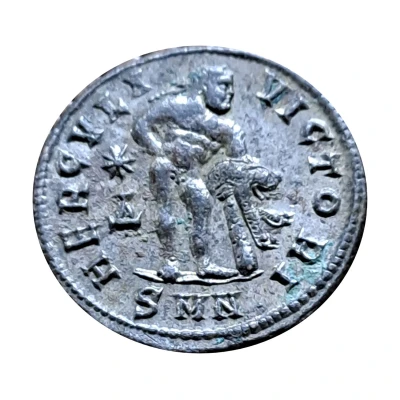

Nummus - Maximinus II HERCVLI - VICTORI; Nicomedia
312 year| Silver | 5.65 g | 21.7 mm |
| Issuer | Rome › Roman Empire (27 BC - 395 AD) |
|---|---|
| Emperor | Maximinus II (311-313) |
| Type | Standard circulation coin |
| Year | 312 |
| Value | Nummus (1⁄7200) |
| Currency | Solidus, Reform of Constantine (AD 310/324 – 395) |
| Composition | Silver |
| Weight | 5.65 g |
| Diameter | 21.7 mm |
| Thickness | 2.4 mm |
| Shape | Round (irregular) |
| Technique | Hammered |
| Orientation | Coin alignment ↑↓ |
| Demonetized | Yes |
| Updated | 2024-10-05 |
| Numista | N#385071 |
|---|---|
| Rarity index | 95% |
Reverse
Hercules, standing right, holding right hand behind back and leaning on lion's skin on club with left hand.
Star over officina letter in left field.
Mintmark in exergue.
Lettering: HERCVLI - VICTORI
Translation: To victorious Hercules.
Edge
Rough
Comment
MAXIMIN II DAIA(1/05/305-04/313)
Augustus
Maximin II, Galerius' nephew, became Caesar on May 1, 305. After the death of Constantius I Chlorus on July 25, 306, he did not become Augustus and remained subordinate to Galerius. Following the Carnuntum conference in November 308, he became only Filius Augustorum, while Licinius I became directly Augustus. Maximin II did not take the title of Augustus until the following year. After Galerius's death in May 311, he was the most senior of the surviving tetrarchs. He fell out with Licinius and Constantine I, while trying to get closer to Maxentius. After 312, Licinius turned against him and he was finally eliminated in 313.
Interesting fact
One interesting fact about the Nummus - Maximinus II (HERCVLI - VICTORI; Nicomedia) coin is that it features the image of the Roman Emperor Maximinus II (also known as Maximinus Thrax) on one side, and the goddess Victory on the other. This coin was minted during Maximinus' reign from 312 to 313 AD, and it is believed that the image of Victory was included to commemorate the emperor's military victories. The coin's silver content and weight of 5.65 grams also make it a valuable and collectible item among numismatists.

